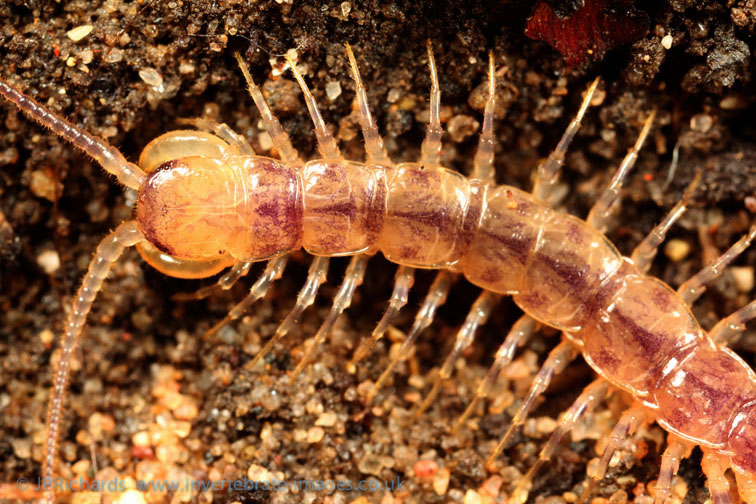Lithobius variegatus Leach, 1814
Common name
Status:
GB IUCN status: Least Concern
ID Difficulty
Identification
Lithobius is a difficult genus and at least 17 species are known from Britain and Ireland.
Lithobius variegatus is the exception! This distinctive centipede is readily identifiable in the field or from a photograph by its large size (to 30 mm body length) and bold purple banded posterior legs and body marbled with purple.
However, this diagnostic purple pigment is lost upon preservation in alcohol and identification of preserved material is more problematic. The combination of >4 + >4 forcipular teeth and strong projections on tergite 7, in addition to the usual 9, 11 and 13, help differentiate it from other species such as the ubiquitous L. forficatus.
More information to allow accurate identification is given in the published identification keys by Tony Barber (2008 & 2009).
Distribution
Although very common over much of western England, Wales and throughout Ireland, it is apparently absent from much of eastern England and mainly restricted to the far west of Scotland. There are isolated outliers, including records from the Edinburgh area (e.g. BMIG 2015 field meeting).
Habitat
It is mostly recorded from rural areas, typically woodland, grassland and moorland, but also in gardens and churchyards. In some parts of central England (e.g. Oxfordshire, Gregory & Campbell, 1996, pg.37) it is mainly restricted to ancient woodland. Specimens can be found under stones and dead wood and within leaf-litter, and characteristically freeze upon disturbance (relying, unsuccessfully from a centipede recording perspective, on their camouflage to remain hidden).
This account is based on the 'Centipede Atlas' (Barber, 2022).
Links
ChiloBase 2.0 - World Catalogue of Centipedes: https://chilobase.biologia.unipd.it/searches/result_species/2693











